Nov. 1, 2004:
I finally finished it….well, the backup lights that is. It has taken me well over a year and I finally decided how I wanted to mount the lights. Many thanks to MikeW for his donation of a spare set of white LED lamps. I probably would not have gotten off of my butt and did it had it not been for his generous offer. Thanks Mike!
OK….it was a cool Monday morning and since I’ve made it a decade long practice of never working at my job on Monday, I decided it was time to do something on the Jeep, the backup lights. I had been over to Mike’s the previous Saturday and we had finished up his Hi-Lift jack mounting and kicked around some ideas for the last part of my ARB manifold project. I had gotten the lights from him and decided then I better get this part of the project done. Letting those lights sit on my work bench would not be a good thing.
I did not wish to flush mount the lights into the corner guards. The light design did not lend itself well to this method and I really didn’t want to remove any more metal from the corner guards. My rear bumper did not have much in the way of flat surfaces that would yield anything after a session with a hole saw. So I decided to surface mount the LED lights rather than flush mounting them.
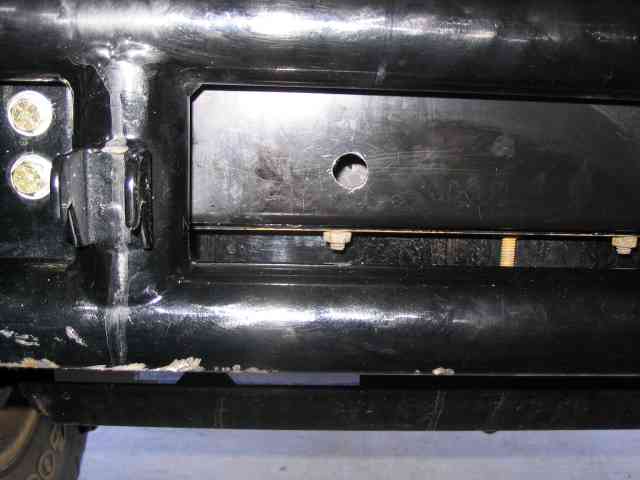
I started with a 1/2″ hole drilled into the rear cross-member. The opening between the two tubes of the bumper would provide a satisfactory mounting location that would be fairly protected from off-road hazards unless I was to back into something that exactly fit into that area on the bumper. I would not be at risk when dragging the bumper off of a rock or ledge. The hole was just a little small so I used a circular file to enlarge it just a bit.
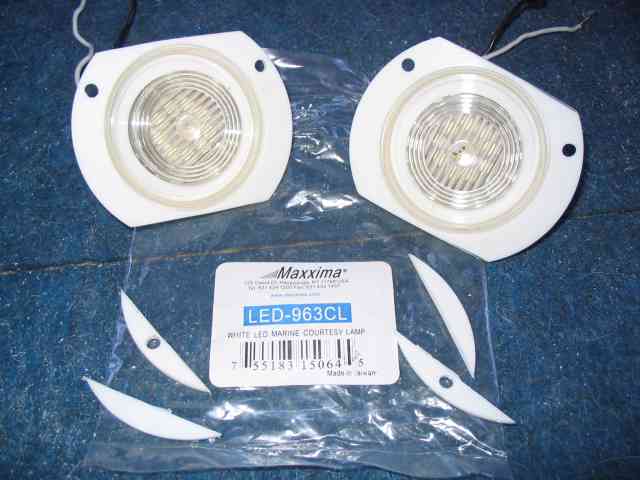
The LED lamps are made by Maxxima, part number LED-963CL. They are listed as a White LED Marine Courtesy Lamp and if I counted the LEDs correclty, there are 9 LEDs per lamp. In order to fit the lamp into the location I decided on, I had to trim a bit of the mounting flange. The watertight integrity of the housing itself was not compromised.
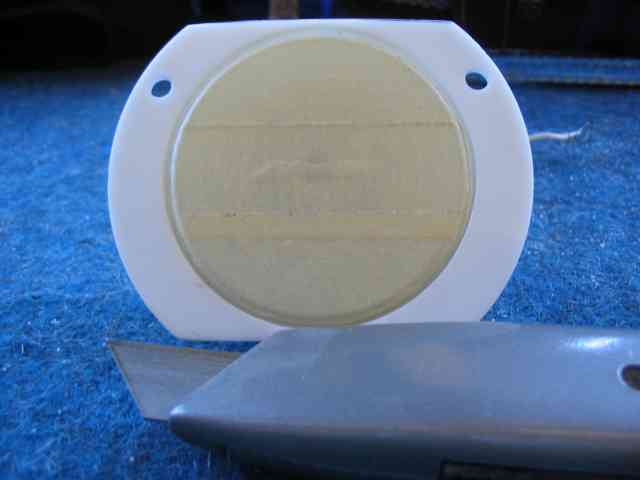
The white mounting flange wasn’t going to work. Using masking tape and a razor blade, the entirely assembly was covered in tape. A cut around the lens assembly allowed the tape on the mounting flange to be removed.
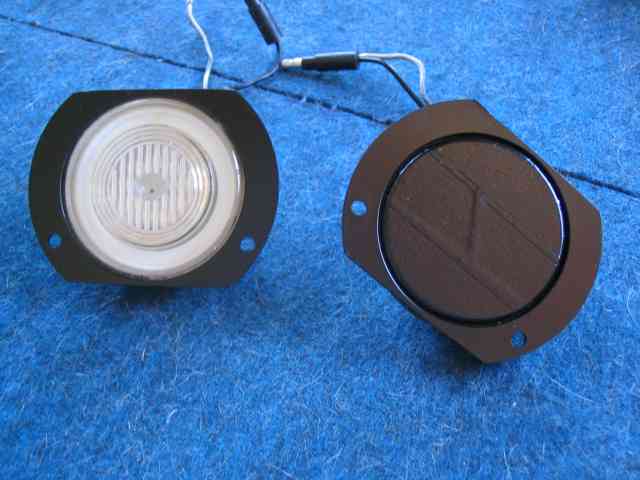
A minute with a can of spray paint yielded the desired results. The white mounting flange was now camouflaged. Ah yes, they were looking less and less like marine courtesy lamps and more and more like LED backup lamps.
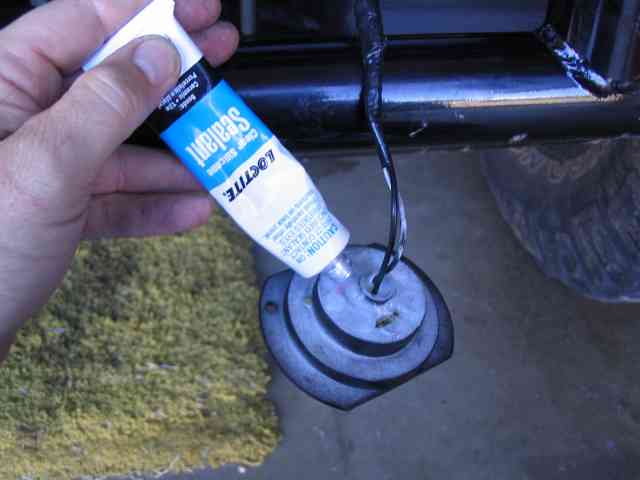
A wiring harness was put together, a pair of grounds and two +12V leads, to connect the two LED assemblies to the backup light wire that originally was connected to the stock tail light assembly. The wiring chart shows which factory wire goes to the backup LEDs. To mount the lights to the cross-member, I used some clear silicone that I had sitting on the shelf. The back of the lamp housing as a small protrusion that just fits in the hole I drilled. This properly locates the lamp in the mounting area and keeps it from moving while the silicone sealant cures. Apply a thin layer to the back of the lamp housing as shown in the above pic. If you got the holes the right size, you can press the lamp into the hole and the silicone will squeeze out and make a nice bead around the lamp housing, securing it in place. I did not find it necessary to tape or hold the lamps in place while the silicone cured. In fact, I had the TJ on the road within 45 minutes of the lights being installed (had to go get my daughter from school).
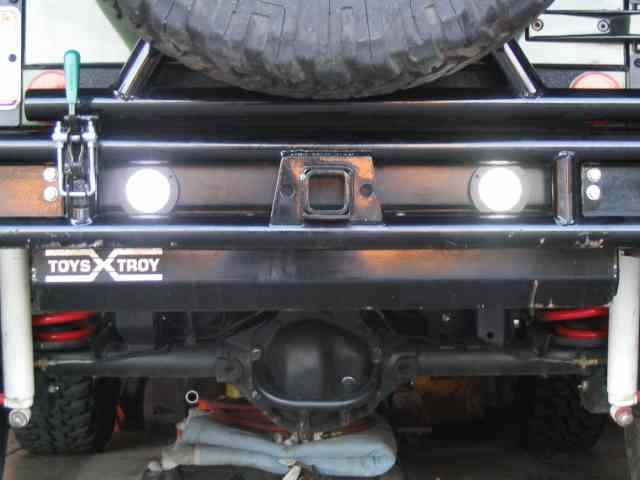
From about a foot away, you can see that the mounting flange does not fit flush against the cross-member. But it does fit between the bumper tubes and for me, that is the more important part. I really don’t want any rocks putting the lamp out of commission.
I guess I could have waited until it was dark out but I’m not all that sure if my camera does dark shots or not. So I snapped this one with the sun nearing the horizon. They aren’t 55 watt driving lights but that is OK. I simply didn’t want to mess around with the higher current draw of the driving light conversion and I won’t put that much current through the tranny’s reverse switch without using a power relay…..more work than I wanted to do. These LEDs will get the job done and I now have something back there that is white and lights up when I am going backward!
Update:
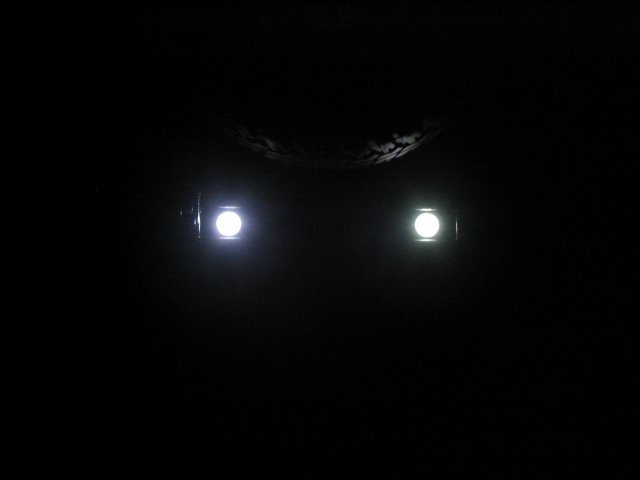
Some of the folks asked for a night shot, so here it is. They are not overly bright and do not compare to a pair of 55W driving lights that are commonly used for backup lights. However, these only use part of an amp of current and they are good enough to let folks know I am backing up.
